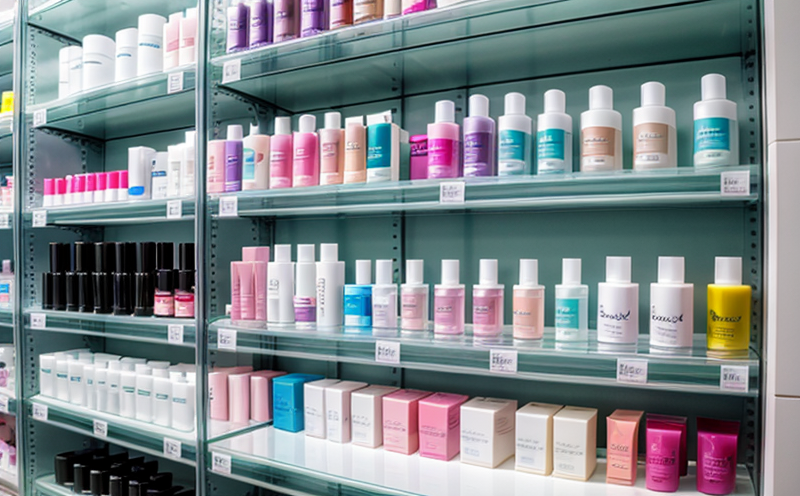Oxidative Stability Testing in Cosmetic Oils
Understanding and ensuring the stability of cosmetic oils is crucial for product longevity and safety. Oxidative stability testing evaluates the resistance of these oils to oxidative degradation, which can lead to off-flavors, discoloration, or even microbial growth if not properly managed. This test ensures that cosmetic products maintain their quality throughout shelf life.
The process involves exposing a sample of the oil to controlled conditions designed to accelerate oxidation while monitoring changes in key indicators such as peroxide value (PV), anisidine value, and color change over time. These parameters provide insights into how effectively the oil resists degradation under various environmental stressors like heat, light, and oxygen.
During testing, samples are subjected to accelerated aging at elevated temperatures or in the presence of oxygen, simulating real-world exposure that may occur during storage or use. The results help manufacturers identify potential issues early on, allowing for adjustments in formulation or packaging before products reach consumers.
This service is particularly important given increasing consumer awareness about product quality and safety. By providing data on oxidative stability, labs like ours enable brands to make informed decisions that enhance trust among end users while complying with regulatory requirements globally.
Applied Standards
The testing procedure adheres to several internationally recognized standards including ISO 6872:2014 and ASTM D942-18. These guidelines ensure consistency across different laboratories worldwide, making sure results are reliable and comparable.
- ISO 6872:2014 – Determination of Peroxide Value in Fats and Oils
- ASTM D942-18 – Standard Test Method for Peroxide Number of Lubricating Oils
These standards provide a framework for accurate measurement, ensuring that each test conducted meets the highest scientific expectations.
International Acceptance and Recognition
Oxidative stability testing is widely accepted across multiple regions due to its significance in maintaining product quality and safety. Many countries have regulations mandating such tests as part of their cosmetic industry standards, ensuring that products are safe for consumers.
- European Union (EU): Regulation EC 1223/2009
- United States: FDA Compliance
- Japan: JIS Z 8756
By participating in this global practice, manufacturers can ensure their products meet the stringent requirements of international markets.
Environmental and Sustainability Contributions
Conducting thorough oxidative stability tests helps minimize waste by preventing unsaleable products due to poor quality. This contributes positively towards reducing environmental impact through more efficient resource use and better product lifecycle management.
- Reduces production of substandard goods, thus lowering energy consumption during manufacturing processes.
- Promotes the development of sustainable formulations that last longer without compromising effectiveness.
An environmentally conscious approach also encourages innovation in packaging materials and methods aimed at preserving product integrity over extended periods.





